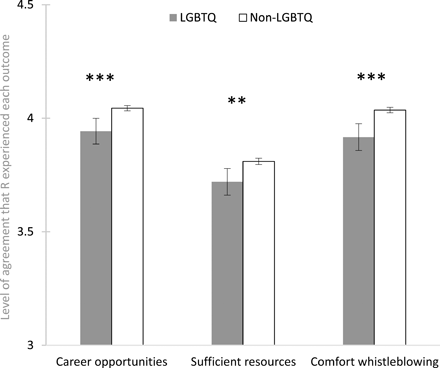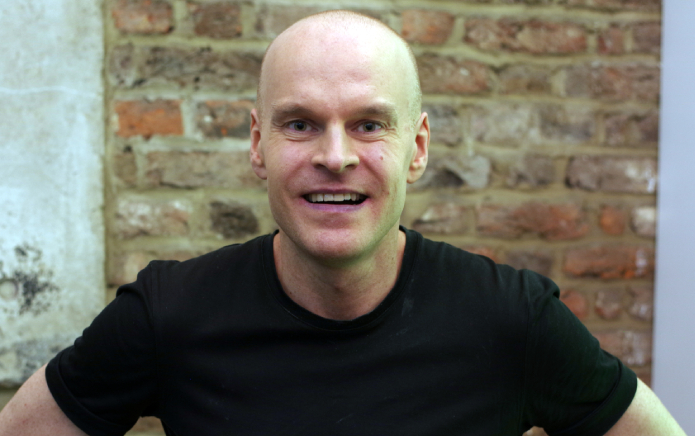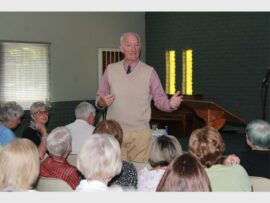INTRODUCTION
The diversification of science, technology, engineering, and math (STEM) fields has lagged behind that of other previously white male-dominated professions in postindustrial societies like the United States (1, 2). The underrepresentation and mistreatment of historically marginalized and minoritized populations in STEM not only are problematic for basic equity concerns of access and opportunity (1–3) but also are harmful to STEM innovation: More diverse groups of problem solvers offer more creative, productive, and fact-based scientific and technical innovations than more homogeneous teams (4–9).
Social science research over the past three decades has made great strides in documenting the persistent and multifaceted disadvantages faced by women and people of color in STEM and the various interactional-, organizational-, and institutional-level processes that produce those disadvantages (3, 10–13). Yet other sociodemographic differences, which may also be axes of marked inequality, demand further investigation. Despite mounting interest in the experiences of persons who identify as lesbian, gay, bisexual, transgender, and/or queer (LGBTQ) among academic, industry, and policy communities (14, 15), to date, sampling and analytic limitations have prevented direct investigation of possible LGBTQ status inequalities in STEM. Much more research is needed to document potential workplace inequalities for LGBTQ persons in STEM fields.
Although LGBTQ rights have expanded over the past 20 years, LGBTQ-identifying workers in the U.S. labor force face a multitude of biases (16–19). Even in the presence of formal employment protections like those extended by the recent U.S. Supreme Court ruling (20), LGBTQ workers are more likely than their non-LGBTQ colleagues to experience hiring and wage discrimination and negative treatment by co-workers and supervisors (16, 19, 21–24). In addition, over half of Americans still harbor some level of prejudice toward nonheterosexual, transgender, and gender nonbinary persons, and those prejudices often translate into overtly or subtly biased treatment of LGBTQ colleagues (25, 26).
While emerging workforce-wide research has demonstrated the existence of disadvantages for LGBTQ persons in the labor force generally, it cannot directly speak to whether and how LGBTQ inequality manifests within specific professional contexts. Professions, including STEM fields, have their own shared and semiautonomous cultural norms of interaction and ways of defining professional competence (27, 28). STEM fields are highly specialized professional arenas that demand lengthy training and work devotion (10). STEM fields strive for objective evaluation of merit and excellence, where a professional’s credibility and contributions to scientific and technological advancement are presumed to be rooted in their STEM-based competence, not their social identities (27, 29–31). The question of whether LGBTQ professionals encounter systemic disadvantages in STEM is thus important not only for more fully mapping the landscape of demographic inequality in STEM but for identifying places where STEM fails to live up to its meritocratic ideals.
Despite the presumed objectivity and universality of STEM, there is reason to suspect that LGBTQ STEM professionals may face persistent disadvantages compared to their non-LGBTQ counterparts (22, 23, 25, 32). Research on LGBTQ-identifying university faculty, for example, found that LGBTQ faculty in STEM departments were more likely to report harassment and social isolation than those in other departments (33, 34). Also, a study of federal employees found that LGBTQ workers in STEM-related agencies (e.g., NASA and EPA) had more negative workplace experiences than LGBTQ workers in non-STEM–related agencies (22). Moreover, research on STEM education has revealed patterns of exclusion experienced by LGBTQ students that may be mirrored in the STEM workforce (35–37).
Early interview- and ethnography-based qualitative studies and snowball sample-based surveys suggest that cultural norms and practices in STEM may help facilitate anti-LGBTQ bias (33, 34, 36, 38). For example, STEM professional cultures often promote “depoliticization” or the bracketing of concerns perceived as social or political (like diversity and inclusion issues) from day-to-day STEM work (31, 39). Discussion of LGBTQ inequality issues—or even the mere presence of openly LGBTQ-identifying persons—may be perceived in STEM contexts as violating depoliticization and threatening the objectivity of STEM (36, 40). In addition, STEM professional cultural norms are often structured around dichotomous, binary thinking (39), which may amplify heteronormativity (cultural beliefs that there are just two binary sexes, and only sexual attraction between people of those two sexes is “natural”) and cisnormativity (marginalizing beliefs about persons with transgender or gender nonbinary identities in favor of cisgender individuals, those who identify with their assigned birth sex) in STEM contexts (41, 42). Individuals who do not fit neatly into traditional gender or sexual identity categories, especially gender nonbinary, bisexual, and queer persons, may be especially likely to experience exclusion or ridicule in STEM.
These and other cultural norms may foster disadvantageous contexts for LGBTQ-identifying professionals in STEM. Anti-LGBTQ bias may not only affect LGBTQ STEM professionals socially—undermining their day-to-day integration into the social fabric of their workplaces—but may also harm them professionally, limiting their access to career opportunities and undermining their colleagues’ assessments of their abilities as scientists and engineers. These negative experiences may, in turn, have deleterious effects on the personal well-being of LGBTQ workers and even encourage them to consider leaving STEM altogether.
Although STEM leaders and professional societies have expressed strong interest in understanding possible LGBTQ inequality in STEM (14, 15), empirical limitations have thus far prevented robust investigations into these processes. The present study uses unique large-scale, national-level survey data to provide a multidimensional examination of possible professional, social, and personal disadvantages faced by LGBTQ-identifying professionals in STEM. The survey data include sufficiently large and directly comparable samples of LGBTQ and non-LGBTQ professionals and multifaceted measures of inequality that allow for identification of a range of differential experiences across LGBTQ status while accounting for potentially confounding demographic, employment, and job-related factors.
Our sample includes more than 25,000 full-time employed STEM professionals, over a thousand of whom identify as LGBTQ. This dataset, part of the STEM Inclusion Study (Principal Investigators: E.A.C. and T.J.W.), is composed of representative samples of the United States–based membership of 21 STEM-related professional societies, including 8 national flagship disciplinary societies in the natural, life, and physical sciences and mathematics; 5 national flagship disciplinary societies in engineering; 6 interdisciplinary organizations; and 2 STEM teaching-focused societies. The survey includes multiple sets of existing and novel validated questions about respondents’ work experiences.
We examine potential inequalities by LGBTQ status along five dimensions: (i) career opportunities, (ii) professional devaluation, (iii) social exclusion, (iv) health and wellness difficulties, and (v) intentions to leave STEM. These dimensions, which may be interrelated and mutually reinforcing, shed light on workers’ professional and social experiences in their STEM jobs and the personal toll these inequalities may take. They also reveal how LGBTQ status disadvantages may be problematic for STEM in general by helping to shunt experienced professionals out of STEM.
We begin by comparing LGBTQ professionals’ career opportunities and resources to those reported by their non-LGBTQ peers. Consistent with formal and informal anti-LGBTQ bias documented in the U.S. workforce overall (16–19, 21–23), and the anti-LGBTQ bias suggested by previous research on the professional culture of STEM (32–34, 36), we expect that LGBTQ STEM professionals will report fewer opportunities for advancing their careers than their non-LGBTQ peers and less access to the resources (e.g., equipment, administrative support, and managerial guidance) they need to succeed in their jobs. They may also report less comfort with “whistleblowing,” or disclosing a suspected violation of a law or rule, without fear of reprisal. Such fears of whistleblowing would be consequential not only for their own careers but also for the safety and welfare of the public more generally (43).
H1: LGBTQ STEM professionals are less likely than their non-LGBTQ peers to have adequate career resources and opportunities for career advancement and are less likely to feel comfortable whistleblowing (controlling for demographic, STEM discipline, employment sector, and job-related factors).
Consistent with exploratory qualitative research suggesting the devaluation and underestimation of LGBTQ-identifying professionals’ contributions to STEM work (36, 38, 39), we also expect that LGBTQ respondents will be more likely than their non-LGBTQ peers to report that their STEM expertise has been questioned by their colleagues:
H2: LGBTQ respondents are more likely to have experienced devaluation of their professional expertise than their non-LGBTQ peers (controlling for other factors).
In line with research noted above on LGBTQ employees’ workplace experiences inside and outside of STEM contexts and literature on cultural norms in STEM (16–19, 21–23, 31–37, 39, 44), we expect that LGBTQ STEM professionals will experience greater social marginalization and more harassment than their non-LGBTQ counterparts:
H3: LGBTQ STEM professionals are more likely than their non-LGBTQ peers to report social exclusion by their workplace colleagues and more likely to have experienced harassment at work (controlling for other factors).
Such exclusion not only is harmful for workers on a personal level but also limits their access to the informal career opportunities and professional mentoring conferred through workplace collegiality during and outside of work (45, 46).
Fourth, partly because of their greater likelihood of encountering negative workplace treatment, we suspect that LGBTQ STEM professionals will experience health and wellness difficulties more frequently than non-LGBTQ STEM professionals, including minor health problems (e.g., headaches and stomach upset), insomnia, stress, and depressive symptoms. Experiences of bias, even when subtle, can foster health problems for disadvantaged populations (47, 48). In addition to testing for LGBTQ status differentials in these health and wellness outcomes, we use mediation analysis to test whether such differences are partly attributable to LGBTQ professionals’ greater exposure to the marginalization, devaluation, and career limitations noted in H1 to H3 above:
H4: LGBTQ STEM professionals experience health and wellness difficulties more frequently than their non-LGBTQ peers (controlling for other factors), and these differences are partly mediated by LGBTQ respondents’ greater likelihood of encountering career limitations, professional devaluation, and social exclusion.
Significant mediation effects would indicate that differential treatment in STEM work gets “under the skin” of LGBTQ-identifying STEM professionals to affect them not only in professional but also in deeply personal ways (37).
Fifth, past research has found that members of marginalized and minoritized groups are more likely to consider leaving STEM than dominant groups and are more likely to actually depart (49). Recent studies of U.S. college students found that LGBTQ-identifying science and engineering students had stronger intentions to leave engineering than their non-LGBTQ classmates (35–37). Accordingly, we hypothesize that LGBTQ STEM professionals will be more likely to consider leaving their current STEM jobs than their non-LGBTQ peers and will be more likely to plan to leave their STEM fields entirely in the future. Intentions to leave, while not exact predictors, are highly correlated with workers’ actual attrition behaviors (50). In addition, we expect that these differences in intentions to leave by LGBTQ status will be partly attributable to LGBTQ STEM professionals’ greater exposure to the professional devaluation, marginalization, and career limitations represented in H1 to H3 above.
H5: LGBTQ STEM professionals are more likely than their non-LGBTQ peers to plan to leave their current STEM jobs and to intend to leave STEM entirely (controlling for other factors), and these differences are partly mediated by LGBTQ respondents’ greater likelihood of encountering career limitations, professional devaluation, and social exclusion.
Last, we test two alternative explanations: one rooted in the possibility that these disadvantages are driven by key supply-side differences (that LGBTQ workers are less educated, less experienced, less hardworking, and/or less dedicated than their colleagues) that are unrelated to their co-workers’ and supervisors’ treatment of them, and another that LGBTQ workers are more likely than their colleagues to have uniformly more negative assessments of their workplaces that are unrelated to anti-LGBTQ bias. We also assess possible intersectional patterns in these results, examining how differences by LGBTQ and non-LGBTQ status are interwoven with other personal and demographic characteristics (gender identity, race/ethnicity, and age), taking into account the effects of belonging to multiple marginalized groups simultaneously (51, 52). We, then examine whether these LGBTQ status patterns vary by STEM subfield and employment sector.
RESULTS
Figures 1 to 6 compare LGBTQ STEM workers to their non-LGBTQ peers on the outcomes introduced above, controlling for variation by subfield, employment sector, job characteristics, and demographic differences (age, gender, race/ethnicity, and parental education). In these figures, the height of the bars represents the means for LGBTQ and non-LGBTQ STEM professionals, holding constant variation by other factors, and the asterisks indicate the two-tailed significance of the difference between LGBTQ and non-LGBTQ employees from multivariate regression models predicting each outcome with controls (see table S2 for regression models). Error bars in Figs. 1 to 6 represent 95% confidence intervals (CIs = 1.96 × SE).
Predicted means by LGBTQ status, holding constant variation by demographics, employment and job characteristics, and professional society. Scale ranges from 1 (strongly disagree) to 5 (strongly agree), with higher numbers representing stronger agreement. Error bars represent 95% CIs. N = 25,324.
Predicted means by LGBTQ status, holding constant variation by demographics, employment and job characteristics, and professional society. Scale ranges from 1 (strongly disagree) to 5 (strongly agree), with higher numbers representing stronger agreement. Error bars represent 95% CIs. N = 25,324.
Predicted means for each category, holding constant variation by demographics, employment and job characteristics, and professional society. Scale ranges from 1 (strongly disagree) to 5 (strongly agree), with higher number representing stronger agreement. Error bars represent 95% CIs. N = 25,324.
Predicted percentages for each category, holding constant variation by demographics, employment and job characteristics, and professional society. Scale represents percent of respondents in each category who experienced harassment at work at least once in the past year. Error bars represent 95% CIs. N = 25,324.
Predicted means for each category, holding constant variation by demographics, employment and job characteristics, and professional society. Scale ranges from 1 (never) to 5 (very often in the last year), with higher numbers representing more frequent incidence of each symptom. Error bars represent 95% CIs. N = 25,324.
Predicted means for each category, holding constant variation by demographics, employment and job characteristics, and professional society. Scale on the “Thought About Leaving STEM Job” measure ranges from 1 (strongly disagree) to 5 (strongly agree), with higher number representing stronger agreement. Scale on “Plans to Leave STEM Profession” measure ranges from 1 (spending rest of their career in their profession) to 5 (spending less than 5 years in their profession). Error bars represent 95% CIs. N = 25,324.
Career opportunities and resources
Figure 1 summarizes results testing the hypothesis that LGBTQ STEM professionals enjoy fewer career opportunities than their otherwise similar non-LGBTQ peers (H1). As shown by both the difference in means (indicated by the height of the bars and nonoverlapping CIs) and the significance levels of the difference between LGBTQ and non-LGBTQ professionals holding constant variation by other demographic, discipline, and job-related factors (indicated by asterisks), LGBTQ STEM professionals were significantly less likely to report they had opportunities to develop their skills than their non-LGBTQ peers and were less likely to report that they had access to the resources they needed to do their jobs well. LGBTQ STEM professionals were also less likely than their non-LGBTQ peers to be confident that they could whistleblow without fear of retaliation. See table S2 for multivariate regression models for each outcome.
Professional devaluation
A second possible dimension of LGBTQ disadvantage is the likelihood that respondents report that their colleagues devalued or discounted their STEM expertise (H2). The professional devaluation scale captures, for example, whether respondents reported being treated as less skilled professionals than their colleagues and whether they were held to higher standards of productivity (see scale measure operationalization below). As Fig. 2 indicates, LGBTQ respondents were significantly more likely to experience professional devaluation than their non-LGBTQ peers who were otherwise similar along demographic, work experience, education level, subfield, and employment sector characteristics. (See table S2 for multivariate models.) Represented another way, LGBTQ professionals were 20.2% more likely than their non-LGBTQ peers to agree that they had experienced at least one of the five facets of devaluation measured in the professional devaluation scale.
Social exclusion
A third potential dimension of LGBTQ inequality is social marginalization (H3). Again, compared to their non-LGBTQ peers, LGBTQ professionals were significantly more likely to experience exclusion by their colleagues (e.g., to not feel like they “fit in,” to be excluded from invitations to after-work social gatherings). See Fig. 3 and measure operationalization below. A third (32.9%) of LGBTQ STEM professionals experienced one or more of these types of social exclusion, compared to less than a quarter (22.7%) of their non-LGBTQ peers. LGBTQ STEM professionals were also about 30% more likely than their non-LGBTQ peers to have experienced harassment at work in the past year (Fig. 4). See table S2 for multivariate models.
Health and wellness difficulties
A fourth dimension of inequality we considered is whether the frequency of experiencing health and wellness difficulties differed by LGBTQ status. Figure 5 presents the average responses on several health and wellness measures for LGBTQ and non-LGBTQ respondents. Controlling for variation by demographic and job-related factors, LGBTQ STEM professionals experienced minor health problems, insomnia, stress, and depressive symptoms more frequently in the past year than their peers (supporting H4). Compared to their non-LGBTQ counterparts, LGBTQ persons were 27% more likely to have experienced minor health problems at least some of the time in the past year, 41% more likely to have experienced insomnia, 22% more likely to have felt nervous or stressed from work, and 30% more likely to have experienced one or more depressive symptoms in the past year.
Mediation analysis with structural equation modeling (SEM) found significant indirect effects of LGBTQ status on these health difficulties through the career limitations, professional devaluation, and social marginalization measures discussed above. (See table S2 for regression models and table S3 for focal direct and indirect coefficients from the SEMs.) These significant indirect effects suggest that LGBTQ STEM professionals’ greater likelihood of experiencing career limitations, devaluation, and marginalization at work helps account for why they experience these health and wellness difficulties more frequently than their peers.
Intentions to leave
Fifth, we examined whether there were differences in respondents’ intentions to leave STEM by LGBTQ status. As hypothesized (H5), LGBTQ STEM professionals thought about leaving their job more frequently and were more likely to have considered leaving their STEM field entirely, compared to their non-LGBTQ peers (controlling for other factors). See Fig. 6. Represented more concretely, 22% of LGBTQ professionals, versus 15% of their non-LGBTQ peers, had thought about leaving their STEM job at least once in the last month, and 12% of LGBTQ respondents (versus 8% of non-LGBTQ respondents) planned to leave their STEM profession within the next 5 years. As with the health outcomes, mediation analysis showed that LGBTQ professionals’ experience with career limitations, devaluation, and marginalization helps account for why they had higher intentions to leave than their non-LGBTQ peers. (See table S2 for regression models and table S4 for SEM coefficient estimates.)
Intersectional patterns and variation by subfield and sector
Table S5 presents supplemental analyses examining the extent to which these patterns of LGBTQ disadvantage vary intersectionally by other demographic factors (gender identity, race/ethnicity, and age) and whether they vary systematically by STEM subfield or employment sector (51, 52). Consistent with literature on the particular challenges they face in the workforce (19), transgender and gender nonbinary respondents reported experiencing minor health problems, stress, and depressive symptoms more frequently than their cisgender sexual minority peers and non-LGBTQ respondents and were more likely to have considered leaving their STEM jobs. Other disadvantages were amplified for LGBTQ professionals of color and LGBTQ-identifying women: LGBTQ-identifying women and racial/ethnic minorities were more likely than white and men LGBTQ STEM professionals, respectively, to experience professional devaluation and harassment at work. These intersectional patterns are echoed in the LGBTQ-only models in table S7. Overall, however, we find that the dimensions of disadvantage documented above were present for persons across specific identities within the LGBTQ umbrella and among LGBTQ persons across other axes of demographic variation (e.g., age and race). In addition, the interaction analyses in table S7 show little variation in the LGBTQ status disadvantages by specific STEM disciplines or employment sectors. This suggests that these LGBTQ disadvantages are not isolated to certain STEM fields or to certain employment sectors but may be operating across the U.S. STEM workforce.
Alternative explanations
Last, we address two possible alternative explanations for the results represented in the figures above. One potential alternative explanation is that these patterns are driven by benign supply-side differences between LGBTQ and non-LGBTQ professionals’ average education level, dedication, and/or work ethic. To test this explanation, we compared LGBTQ STEM professionals’ highest degree, hours worked, work dedication, and likelihood of having a “core technical” primary job responsibility (basic research, design, or computer programming) to that of their non-LGBTQ peers, holding constant their subfield, employment sector, employer size, and other demographic characteristics. Results from these analyses refute this supply-side explanation: Compared to their non-LGBTQ peers, LGBTQ STEM professionals were equally highly educated and just as likely to have core technical primary job responsibilities. They worked just as many hours, on average, as non-LGBTQ professionals and were just as personally committed to their work. (See table S8.)
A second possible alternative explanation is that LGBTQ professionals have uniformly more negative views of their jobs that are unrelated to LGBTQ-specific mistreatment. To test this, we reran all models with a control for respondents’ job satisfaction. The LGBTQ differences documented above were generally robust to this control for job satisfaction, although job satisfaction is strongly negatively correlated with the devaluation and marginalization measures tested in the models and thus reduces the predictive power of LGBTQ status in those models. (See table S9.) These analyses offer counterevidence to contentions that the outcomes above are the result of LGBTQ workers’ weaker qualifications or work commitment or their propensity to have more negative assessments of their jobs overall.
DISCUSSION
The analyses above identified patterns of LGBTQ disadvantage along five dimensions of inequality. LGBTQ persons were not only more likely than their otherwise similar non-LGBTQ peers to experience social marginalization and harassment in their workplaces, but they were also more likely to report limited career opportunities and to have had their professional expertise devalued by their colleagues.
These forms of disadvantage are damaging for LGBTQ STEM professionals’ day-to-day workplace experiences and their careers (23). But they are also harmful to these STEM professionals in more personal ways: LGBTQ respondents reported experiencing health difficulties more frequently than their peers, and these difficulties were partly due to the greater social marginalization, career limitations, and professional devaluation they experienced at work.
These disadvantages are also problematic for STEM fields. LGBTQ STEM professionals were more likely than their non-LGBTQ peers to intend to leave STEM, particularly when they experienced career limitations, marginalization, and devaluation. This departure of skilled and experienced professionals from STEM because of negative treatment they receive in their work environments disrupts scientific inquiry and technological innovation (8). LGBTQ STEM professionals are also less likely than their peers to feel comfortable whistleblowing. Their greater fears of raising ethical and legal issues at work is concerning, as STEM professionals are increasingly on the front lines of issues of public safety and security.
These results underscore the immediate need for STEM-related workplaces, societies, and funding agencies to address anti-LGBTQ sentiments and behaviors. No STEM field or sector was immune to these problems: We found that LGBTQ status disadvantages operate across disciplines and employment sectors (53). STEM workplaces need to include LGBTQ status in their broad efforts toward diversity and inclusion, provide LGBTQ employees with opportunities to network and seek support from one another and from organizational leadership (e.g., through LGBTQ Employee Resource Groups), and ensure that LGBTQ persons have access to the full suite of formal and informal benefits enjoyed by their non-LGBTQ colleagues. These interventions should take into account the experiences of persons who occupy multiple marginalized identities simultaneously (51, 52). Professional STEM societies, further, continue to be vital for fostering conversations about LGBTQ inclusion and intersectionality and should consider these matters in light of the cultural and institutional issues specific to their fields. Research funding agencies, in turn, should encourage and fund proposals on STEM workplace experiences and diversity initiatives that include LGBTQ status as a focal axis of variation.
Scientists, technical professionals, engineers, and mathematicians play undeniably influential roles in public health, national security, and economic well-being. Recent research has illustrated the benefits of diversity for creativity and innovation in STEM (4–9), and there are many inspiring historical and contemporary examples of exceptional STEM work by LGBTQ-identifying persons. Factors that prevent talented and motivated LGBTQ individuals from succeeding in STEM, or even staying in STEM at all, are of scholarly, economic, and national concern. It is vital for future research to investigate the mechanisms driving these patterns and the interventions that may help to ameliorate them.
MATERIALS AND METHODS
Data and participants
We conducted the analyses above using survey data from representative samples of the United States–based membership of 21 STEM-related professional societies. These societies span the physical and life sciences, mathematics, and engineering. They encompass 8 U.S. national flagship disciplinary societies in the natural, life, and physical sciences and mathematics; 5 U.S. national flagship disciplinary societies in engineering; 4 interdisciplinary STEM societies; 2 STEM teaching-focused societies; and 2 demographic-focused professional societies. We do not specify the names of these societies to protect respondent confidentiality.
Our analysis uses the 25,324 United States–based full-time STEM professionals who participated in the survey, including 1006 who identified as LGBTQ. We excluded from our analysis those respondents who were retired, out of work, or full-time students at the time of the survey. A third of the sample (33%) worked in the for-profit industry sector; 39.9% worked in higher education; and the remaining 26% work in government, nonprofit, and K-12 sectors. The study was approved by the human subjects board at each author’s institution. Potential respondents were informed about the study on the landing page of the online survey; only those who gave their consent were allowed to continue with the survey. See the Supplementary Materials for additional details on survey collection procedures and validity and reliability testing.
Operationalization of outcome measures
We capture respondents’ career opportunities and resources with a scale measure and two single-question variables. Career opportunities is a scale measure (α = 0.633) that averages two questions that asked respondents’ level of agreement, based on their experiences in their current STEM job, that “I have been given opportunities to take on a leadership role” and “I have limited opportunities to develop my skills” [Reverse Coded] [1 = strongly disagree (SD) to 5 = strongly agree (SA)]. Sufficient resources is a measure of respondents’ level of agreement that “I have sufficient resources to get my job done” (1 = SD to 5 = SA). Comfort with whistleblowing was measured with a question that asked respondents’ level of agreement that “I can disclose a suspected violation of any law, rule, or regulation without fear of reprisal” (1 = SD to 5 = SA).
Professional devaluation is a scale measure (α = 0.753) averaging respondents’ agreement with the following five statements: “I have to work harder than my colleagues to be perceived as a legitimate professional,” “My colleagues sometimes think I am less productive than I actually am,” “In my workplace, my work is respected” [Reverse Coded], “My colleagues treat me as an equally skilled professional” [Reverse Coded], and “I am held to the same standards as others for promotion or advancement” [Reverse Coded] (1 = SD to 5 = SA).
Social exclusion is a scale measure (α = 0.734) of respondents’ agreement with the following three statements: “Overall, I feel I ‘fit in’ with the other people in my workplace” [Reverse Coded], “I feel included in casual conversations among my colleagues” [Reverse Coded], and “when my co-workers get together socially at lunch or after work I am usually included in the invitation” [Reverse Coded] (1 = SD to 5 = SA). The harassment measure is a dichotomous item that asked whether respondents were “harassed verbally or in writing on the job” once or more during the past 12 months (1 = yes, 0 = no).
We measure the frequency of experiences of health and wellness difficulties with three single question items that asked “how often, if at all, have you experienced the following in the last year:” “been bothered by minor health problems such as headaches or stomach upset?” “Had trouble sleeping to the point that it affected your performance on and off the job?” and “Felt nervous or stressed?” (1 = never to 5 = very often). In addition, reflecting standard survey measures used to detect symptoms of depression (54), we used the following two markers (averaged together): How often in the past year they “felt that you were unable to control the important things in life?” and “felt that difficulties were piling up so high that you could not overcome them?” (1 = never to 5 = very often).
We measure intentions to leave STEM with two items: one that asked how frequently in the last year they had “thought about leaving my current job?” (1 = never to 5 = almost every day) and another that asked how long they planned to “stay in your current profession (even if you change jobs)?” (5 = less than 5 years; 4 = 5 to 9 years; 3 = 10 to 15 years; 2 = 16 = 20 years; 1 = the rest of my career). These two measures capture both respondents’ intentions to leave their current STEM job and their intentions to leave their STEM field altogether.
Where appropriate, we reverse-coded items to maintain consistent positive-to-negative or negative-to-positive numerical scaling on items within the same index or hypothesis. Reverse coding was used for interpretive ease only and did not alter the strength of the statistical relationships between dependent and independent variables.
LGBTQ status
We designed our LGBTQ status measures in accordance with best practice guidelines from the Williams Institute, the Center for Disease Control, and the American Sociological Association’s Committee on the Status of LGBTQ People in Sociology. We measured LGBTQ status with a set of indicators that asked separately about respondents’ sexual identity and gender identity. First, respondents were asked, “please mark the category that best matches your sexual identity,” and they could choose between the following options: “Straight or heterosexual,” “Gay or Lesbian,” “Bisexual,” “Queer,” “Something else (please specify)” or “I do not know how to answer.” Anyone who marked “Gay or Lesbian,” “Bisexual,” or “Queer” was included in the LGBTQ category. Respondents who marked “do not know” or “something else” were asked in a follow-up question, “Do you identify as part of the LGBTQ community?” Those who answered yes to this question were included in the LGBTQ category in our analysis.
Gender identity was measured with a sequence of three questions. The first question asked “what sex were you assigned at birth?” “Male” or “Female.” The second question asked, “How do you currently describe yourself?”: “Male,” “Female,” “Transgender Male (FTM),” “Transgender Female (MTF),” “Something else,” or “I do not know how to answer.” Respondents whose answers on the first and second questions were different received the following confirmation question: “Just to confirm, you were assigned a different sex at birth than how you currently describe yourself. Is that correct?” “Yes” or “No.” This confirmation question limited the number of false positives on transgender or gender nonbinary status—an important step for appropriately capturing proportionally small populations like non-cisgender persons. Respondents who answered yes to this confirmation question were included in the LGBTQ category. Respondents who marked “something else” or “I do not know” on the current gender identity question were coded as “gender nonbinary” for their current gender identity category and were given the follow-up question, “Do you identify as part of the LGBTQ community?” We pretested this question structure in the pilot survey of STEM professionals and in a survey of engineering students at eight universities (37). We paid careful attention to these measures of LGBTQ identity in the face validity and construct validity testing described in the Supplementary Materials.
Respondents who indicated that their current gender identity was female (whether they identified as cisgender or transgender) were coded as women; respondents who indicated that their current gender identity was male (whether they identified as cis- or transgender) were coded as men. Because of the very small proportion of respondents who identified as gender nonbinary, and our desire to protect the confidentiality of these respondents, we did not provide results for gender nonbinary respondents as a separate category in most regression models. Instead, cis- and transgender women are compared both to cis- and transgender men and gender nonbinary respondents. In the intersectional analyses in tables S5 and S7, we did assess the particular experiences of transgender and gender nonbinary persons vis a vis their cisgender sexual minority peers.
Control measures
We included controls for several important demographic characteristics in each model. We controlled for the racial/ethnic categories with which respondents identified (they could choose multiple): Hispanic/Latinx, Black, Asian, Native American/Asian Pacific Islander, white, and other racial/ethnic category (1 = yes, 0 = no); respondent age (in years), their highest degree (1 = high school or less to 8 = PhD), and the highest education attained by a parent (1 = high school degree or less to 8 = PhD).
We included controls for respondents’ STEM field (life science, physical science, computer science and mathematics, engineering, or other STEM field); social science fields were excluded as they have distinctive demographic and cultural contexts (1). We also controlled for other employment factors: employment sector (university/college, nonprofit, government, K-12 education, private sector, or other employment sector); employer size (1 = less than 10 employees to 8 = more than 25,000 employees); whether they had supervisory responsibilities (1 = yes, 0 = no); and whether their primary work responsibility was a core technical task of basic research, design, or computer programming (1 = yes, 0 = no). Last, each model included dichotomous indicators for the STEM professional societies from which respondents were recruited.
Analytic strategy
Figures 1 to 6 present predicted values for LGBTQ (shaded bars) and non-LGBTQ (unshaded bars) STEM professionals, holding constant variation by demographics, subfield, employment sector, and other job-related factors. To produce these values, we ran ordinary least squares (OLS) and logistic regression models (as appropriate) in Stata predicting each outcome measure with LGBTQ status and controls. Using the resulting regression equations, we calculated the marginal values when LGBTQ = 1 and LGBTQ = 0, holding all other controls at their mean. The asterisks above each pair of bars represent the two-tailed significance level of LGBTQ status produced by the regression analyses presented in table S2. While the raw means on each outcome measure show the same patterns of variation and significance levels by LGBTQ status as the predicted means in Figs. 1 to 6, raw means are more difficult to interpret given the possibility of variation by other confounding variables (e.g., respondent age). Hence, we opted to present predicted means that control for this variation. Where appropriate, we also present percentage differences in the proportion of LGBTQ and non-LGBTQ respondents who reported having experienced the career limitations, devaluation, and marginalization outcomes in question.
Robustness checks and supplementary analysis
To test the robustness of these findings to alternative analytic approaches, we reran the analyses using three additional modeling strategies. First, instead of including individual dichotomous controls for each professional society, as we did above, we reran the analyses as hierarchical linear models with respondents nested in professional societies using the MIXED command in Stata. Second, instead of using multiple imputation to handle missing data, as is standard practice, we ran each model with listwise deletion. Last, we created a weighting variable that adjusted the distribution of respondents in our sample by major demographic and employment characteristics (gender, race/ethnicity, STEM field, and sector) to match the distribution that exists in the U.S. STEM workforce nationally [as represented by the National Science Foundation (NSF) data in table S1] and reran the analyses with this weight. The patterns presented above and in the Supplementary Materials were replicated using each of these three alternative modeling strategies, indicating that the results are robust to this variation in analytic approach.
Tables S8 and S9 present analyses addressing the two alternative explanations described above. Contrary to possible arguments that these LGBTQ differences were driven by key supply side differences in education level, work ethic, or commitment to STEM, we found no significant differences by LGBTQ status on those measures (see table S8).
In addition, we reran the models with a control for respondents’ job satisfaction. Job satisfaction is strongly inversely correlated with workers’ experiences of social exclusion and professional devaluation in the workforce generally (55) and in this sample specifically. Hence, the inclusion of a control for job satisfaction should sharply curtail or eliminate the explanatory power of LGBTQ status on the outcomes if these differences were just a matter of LGBTQ workers’ personal unhappiness with, or greater inclination to “complain” about, their work. Table S9 compares the coefficients and significance levels for LGBTQ status in regression models with and without the job satisfaction measure. As above, all models control for demographic and employment characteristics. In all but one of the models that included the control for job satisfaction (the model predicting sufficient resources), LGBTQ status still significantly predicted career opportunities and resources, professional devaluation, social integration, health and wellness difficulties, and persistence intentions—even when differences in LGBTQ and non-LGBTQ workers’ job satisfaction were accounted for. In other words, while LGBTQ persons were less satisfied with their jobs overall (which is tied to their less positive treatment at work), even among STEM professionals who are equally satisfied with their jobs, LGBTQ persons still report disadvantages in career opportunities, professional valuation, inclusion, and health and wellness. Also, even among STEM professionals with the same level of job satisfaction, LGBTQ workers were more likely to consider leaving their jobs and STEM fields than their non-LGBTQ peers. This suggests that the LGBTQ status disadvantages documented above cannot simply be dismissed as LGBTQ persons’ more uniformly negative assessments of their jobs.
Last, consistent with labor force-wide scholarship that has shown positive effects of nondiscrimination protections on LGBTQ employees, we found that LGBTQ respondents in our sample who reported that their organizations had LGBTQ-inclusive nondiscrimination policies and health care benefits were significantly less likely than LGBTQ respondents working in organizations without these policies to report social exclusion (B = −0.287, P < 0.01) and professional devaluation (B = −0.296, P < 0.001) and were more likely to report having sufficient resources (B = 0.353, P < 0.001).
Limitations
While the STEM Inclusion Study data are unmatched in their inclusion of LGBTQ self-identification measures, sufficient sample sizes of both LGBTQ and non-LGBTQ respondents, and detailed measures of differential work experiences, they have a few limitations of note. First, while the 21 organizations represent a wide array of STEM professionals, they do not cover every STEM subdiscipline or interdisciplinary community. Our sample also includes only those STEM professionals who are members of their professional societies and who volunteered to take the survey. As indicated in table S1, our sample overrepresents STEM professionals employed in academia and in engineering and underrepresents STEM professionals in computer science. However, as noted above, supplemental analyses using weights that adjusted our sample to mirror the proportion of STEM professionals in the NSF data by demographics, subfield, and sector revealed that the patterns of LGBTQ inequality presented in Figs. 1 to 6 remain even when weighted to match the U.S. STEM population. In addition, there was little variation in the LGBTQ status effects across disciplines or employment sectors (see table S6), suggesting that over- or underrepresentation of respondents employed in certain subfields or sectors would not meaningfully affect the central result patterns we report here. Second, some of the focal outcome measures (e.g., harassment) used single-question items, as opposed to multi-item scales. Third, the survey does not include precise measurements of respondents’ salary or detailed organizational advancement histories, so we cannot track LGBTQ differentials in promotion or pay over time. Despite these limitations, our analysis is a vital step forward in assessing LGBTQ inequality in STEM. We encourage future research that expands this investigation, with careful attention to the mechanisms producing these disadvantages.














